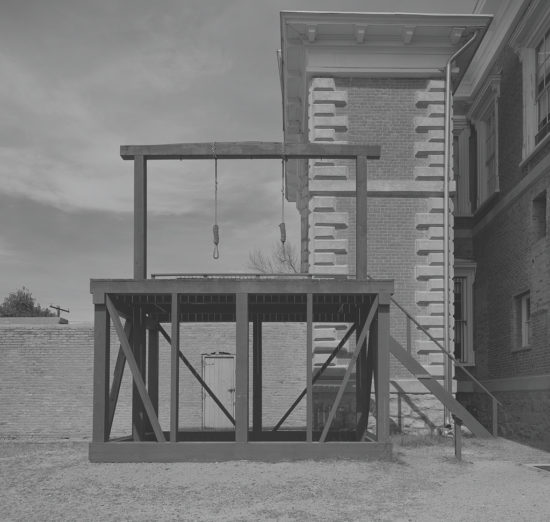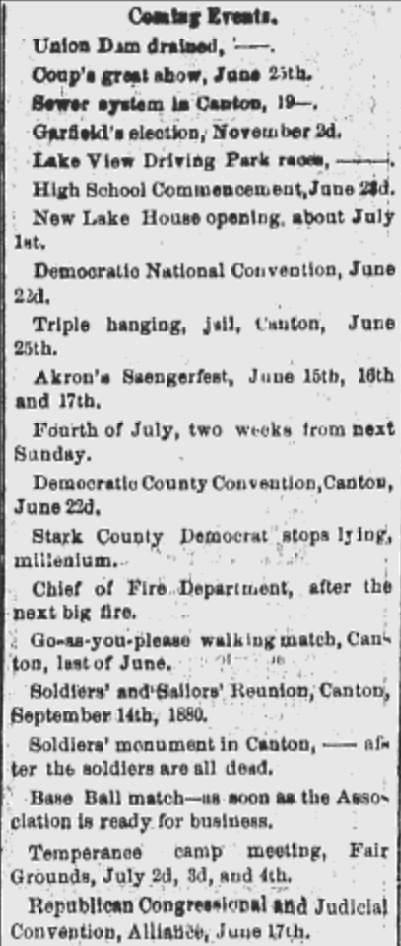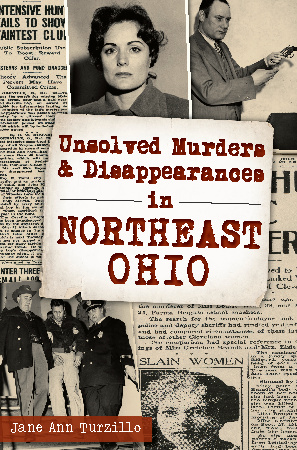
It’s said that of all the methods of execution, the gallows is one of the more humane ways to die. Similar in some ways to the guillotine, if the procedure is properly performed (and we know that can be a big if), the body drops from the scaffold so fast and hard that the neck snaps almost instantly, severing the spinal cord and killing the person with a minimal experience of pain.
No wonder, then, that in fin-de-siècle Ohio—the heart of the good, kind, and decent Midwest—it was one of the most popular methods of execution of all.
Known for a raft of American presidents, heartland bluegrass music, and a strong culture of immigration from Northern and Eastern Europe—the mascot of Cincinnati is the flying pig, thanks to German hog farmers and their delicious pork products—the Buckeye State enjoys a reputation for gracious citizens and homegrown American values. According to historian Kimberly A. Kenney, however, one of those values happened to be murder.
In her book Murder in Stark County, Ohio, Kenney charts the fortunes of eight early Ohioans who came to take the lives of another. Her criminals range from young, rascally drifters to ladies of highest society (the infamous Annie George, accused of killing President McKinley’s brother-in-law)—but a common thread linking many of them together is their final destination.
Take, for instance, Christian Bachtle, who killed his wife Mary in the middle of the night, striking her with an axe in a grisly slaying. Bachtle, a longtime alcoholic prone to violent rages, spent his last days mourning his addiction to the demon drink, indeed, using his last words before ascending the gallows to warn the crowd of the dangers of intoxicating liquors.

Or John Sammet, a young man who had regularly fallen afoul of the law, and who in 1879 shot a man to prevent him from testifying against him. Convicted of murder, Sammet was sentenced to join on the gallows two young immigrants named George Mann (from England) and Gustave Ohr (from Bavaria) who had killed their indigent traveling companion a year earlier. With such youthful criminals the case was a public sensation, with over thirty thousand people visiting the boys in their cells in the two months before their execution.
On June 25, 1880, however the triple hanging was witnessed by a few dozen people, given the security concerns. Kenney recounts their last days and hours in remarkable detail. Of their end:
“Sherriff Altekruse sprung the trap, and with a quick report and hushed whisperings, the three boys, at 11:43, dropped to death. Ohr moved the muscles of one leg after he was down, and that was all. Sammet did not move a muscle. Mann continued to squirm with his legs, and draw up his shoulders. … At 31 minutes after the drop, Ohr was cut down. His neck was pronounced broken. Sammet was cut down ten minutes later, and his neck was broken also. Three minutes later Mann was cut down and his neck was also pronounced broken. The execution was a success, actually and professionally.”

That same trap, boasting a brand-new scaffolding, would be used two years later to send George McMillan to his death, convicted of murdering his wife Augustine. During one of his last-minute stays of execution, the Repository (the local newspaper) observed that “…the grim and hungry gallows within three hours of enjoying its meal of humanity, is cheated again.” But not forever. McMillan’s hanging would be one of the last in Stark County, as a new state law declared all executions would thenceforth take place at the state penitentiary in Columbus. Even there, however, certain kinks needed to be worked out, as Henry Popp—convicted of murdering a saloon owner in yet another drunken rage of the day—saw to his terror. Facing the gallows on December 19, 1890, Popp witnessed the man before him suffer a botched execution. Kenney:
“The rope was not tied properly around his neck, so just after the warden pulled the lever of trap, the knot in the noose settled around his chin instead of his neck. ‘The crowd was horrified to see the body struggling … the hands working, the breast heaving and hear the most unearthly noises escape from the dying man’s throat.’ The breath went through the windpipe with a sawing sound that was kept up for five minutes. Every face was blanched and strong men trembled as with palsy.”
Thankfully for Popp, a new rope was provided, and his own death was swift. But the gallows would reign only for a few years longer, as the electric chair would be introduced in 1897, and much later, lethal injection in 1993—sending, after decades of use, that ‘grim and hungry’ Stark County scaffold into its own next life thereafter.
Looking for more to read during quarantine? Check out our quaran-reads here. Finding us for the first time, and want to learn more about what we do? Visit our welcome page and sign up for the Crime Capsule email newsletter. You can also check out Murder in Stark County, Ohio and other similar titles below at arcadiapublishing.com. See you behind bars!






